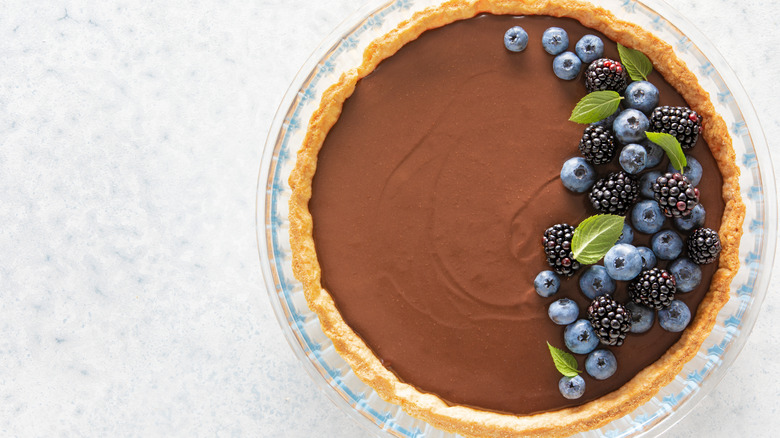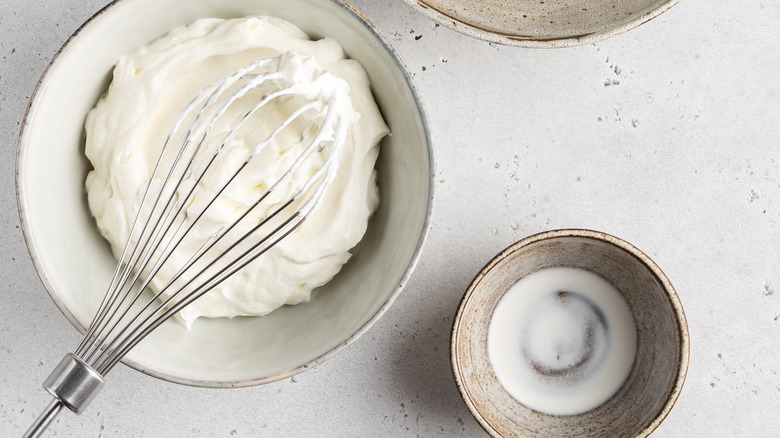The Sweet Ingredient Swap For Lighter Tart Crust
When it comes to making fruit and chocolate-filled tarts, the kind of crust you place your fillings into can make or break your finished treat. Soggy shells can ruin a dessert, and hard, dense exteriors can prevent eaters from savoring the flavorful recipe you've worked hard to make. Ideally, the crust for your chosen filling remains buttery yet light long after the treat is removed from the oven.
To make a lighter, chewier crust, consider using powdered sugar when mixing ingredients for the dough. Powdered sugar certainly isn't just for decorating cakes and baked goods; this ingredient can help you create a container for your choice of chocolate and caramel or strawberry rhubarb that you can confidently serve with pride. By making the crust with powdered sugar instead of the more typically used granulated variety, you'll increase your chances of baking a tart that is texturally light and enjoyable to bite into.
A simple ingredient exchange
Use a food processor to mix powdered sugar with an egg yolk, vanilla extract, heavy cream, and the rest of your dry ingredients, and you'll be on your way to assembling a tart that will be devoured quickly after baking. Powdered sugar results in a dough that is easier to work with, so if you have your heart set on creating an aesthetically pleasing crust, you may find a less-sticky product more convenient to shape and form.
The big difference between granulated and powdered sugar is the size of the granules, so keep proportions in mind as you make ingredient swaps to your dough recipes. If you typically need ½ cup of granulated sugar, you'll need to double the amount of powdered sugar. Though it sounds like you'll be increasing the sugar content, you'll be surprised to see that the sweetness of your recipe isn't impacted despite the higher quantity.
Don't have powdered sugar stocked in your kitchen? Make your own powdered sugar at home by blending cornstarch and granulated sugar to make a lighter crust for tonight's dessert.

